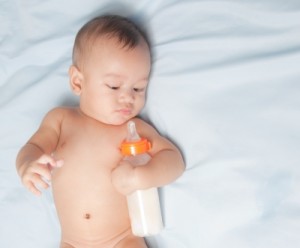If you’ve read Accidentally Green over the past week, you now have a good understanding of bisphenol A – from the products that include the chemical and the health effects. But now what?
 While it’s virtually impossible to avoid exposure to BPA if you live in the United States, you definitely can limit your exposure. Here are a few fairly simple ways:
While it’s virtually impossible to avoid exposure to BPA if you live in the United States, you definitely can limit your exposure. Here are a few fairly simple ways:
- Limit your use of canned foods, although it’s difficult. Trust me, trying to make your own homemade pizza sauce without using storebought canned tomato products doesn’t turn out very well. (What can I say. I’m not Italian, and I haven’t mastered the art of canning yet.) And as much as I like to cook, I’m not planning to attempt a homemade cream of mushroom soup to add to a recipe anytime soon. For a canned fruit and vegetable replacement, though, switch to fresh or frozen.
- Drink out of glass or stainless steel. Pitch the plastic water bottles and choose stainless steel without plastic liners. For children, choose BPA-free sippy cups and bottles if you use plastic, or switch to glass or stainless steel varieties. 1
- Throw your receipts away as soon as possible. And if you do need to keep a receipt, store it in a resealable plastic bag.
- If you must use plastic containers, only use Plastics #1, #2, and #4. (Avoid #7 and polycarbonate plastics.) As a rule, never heat food in plastic containers. 2 Also, don’t store hot foods or liquids in plastic containers. Washing plastic containers in hot water (both handwashing or in a dishwasher) is a really bad idea, too, because when the plastic heats up, it leaches much more BPA. 3 For parents, avoiding plastic containers also means to be careful with your children’s plates, bowls, and silverware – make sure you use items that are BPA-free.
Bottom line
Trust me, I know it is hard to make the switch from plastic. Even after all my research, it took me two years to purge the plastic containers from my kitchen. It’s a bit of an expense to change over to glass and ceramic storage containers, but they’re so much healthier. Plus, they’re sturdier and they don’t stain. I also love the fact that leftovers can go straight from the fridge to the microwave. Many glass containers now come with BPA-free plastic lids, making food storage a breeze.
Since I’m being honest about my plastic use, I do still use BPA-free plastic plates, silverware and sippy cups for my children. It’s meant throwing away some really cool looking kiddie plates and cups, which has been hard for me since I’m a cheapskate. But I’ve noticed I have a greater peace knowing that I’m not exposing my family to toxins.
After coming from a past filled with plastics, I’m trying hard to stop using as much plastic as possible. Because even though the BPA-free items seem safe today, I wonder what the next chemical with BPA proportions – both in danger and in the frequency of use – will be.
Talk back
I’m really curious: how have you cut back on your plastic dependency?
Sources
1. “What You Can Do.” Making Our Milk Safe. 2. “Bisphenol A: Toxic plastics chemical in canned food.” Environmental Working Group. 3. “Plastic (Not) Fantastic: Food Containers Leach a Potentially Harmful Chemical.” David Biello. Scientific American. Feb. 19, 2008.
Photo credit
Sura Nualpradid/FreeDigitalPhotos.net
Latest posts by Hilary Kimes Bernstein (see all)
- The Day I Realized Healthy Choices Don’t Guarantee Health - July 21, 2015
- Avoid Synthetic Bug Sprays with All-Natural Repellents - July 16, 2015
- The Day I Learned I Could Cook Real Food - July 13, 2015
Leave a Reply